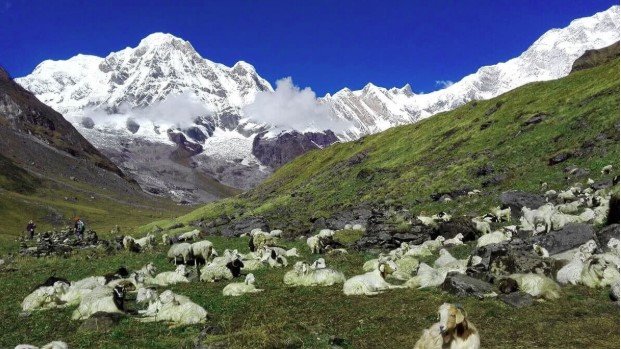The Quick Annapurna Base Camp Trek emerges as the definitive solution for adventurers seeking immediate access to one of the world’s most spectacular mountain amphitheaters without the traditional time investment. This streamlined approach to the classic ABC route transforms the conventional two-week journey into an efficient 4-6 day adventure while preserving every essential element that makes the Annapurna Sanctuary a globally celebrated destination. The quick format addresses the growing demand from modern travelers who value authentic experiences but operate within constrained schedules.
This innovative trekking model has revolutionized access to high-altitude Himalayan adventures, making the legendary Annapurna Base Camp achievable for busy professionals, limited-vacation travelers, and adventure enthusiasts who previously considered such experiences beyond their reach. The quick format eliminates time-consuming elements while intensifying the core mountain experience, creating a concentrated adventure that often proves more impactful than extended alternatives.
The Quick Trek Revolution and Methodology
The Quick Annapurna Base Camp Trek represents a fundamental reimagining of traditional Himalayan trekking approaches, prioritizing efficient mountain access over extended journey experiences. This methodology recognizes that the most memorable and transformative elements of the ABC trek occur in the upper reaches of the Modi Khola valley, where dramatic mountain scenery and challenging terrain create the defining adventure experience.
The quick format strategically eliminates the gradual approach through lower-altitude agricultural areas, instead utilizing efficient transportation to reach optimal starting points that immediately immerse trekkers in the mountain environment. This approach acknowledges that while cultural exposure in farming communities has value, the core ABC experience centers on the spectacular mountain amphitheater and the journey through increasingly dramatic alpine environments.
The methodology focuses on rapid elevation gain through carefully planned daily stages that maximize mountain exposure while maintaining essential safety margins. Each day is designed to provide significant scenery changes and progressive mountain challenges, creating a concentrated adventure that delivers the full spectrum of ABC experiences within a compressed timeframe.
Strategic Route Planning and Execution
The Quick Annapurna Base Camp Trek employs sophisticated route planning that transforms traditional hiking approaches into efficient transportation segments while preserving all essential mountain experiences. The journey typically begins with an early departure from Pokhara, followed by strategic vehicle transport to high-altitude starting points such as Jhinu Danda, Bamboo, or Dovan, depending on seasonal road conditions and accessibility.
This strategic positioning immediately places trekkers in the heart of the Annapurna Conservation Area, where the landscape showcases the dramatic transitions from bamboo forests to rhododendron groves to alpine meadows. The route focuses exclusively on the Modi Khola valley’s upper sections, where every kilometer provides spectacular mountain views and progressive environmental changes.
Daily progression follows carefully optimized stages that balance rapid advancement with necessary acclimatization periods. The typical route advances through Bamboo, Dovan, Machapuchare Base Camp, and ultimately to Annapurna Base Camp at 4,130 meters, with each stage designed to provide maximum mountain exposure and progressive challenge.
The return journey utilizes rapid descent strategies, often incorporating helicopter evacuation options for the ultimate quick experience. This combination of strategic ascent and efficient descent maximizes time utilization while maintaining comprehensive mountain exposure and safety standards.
Physical Conditioning and Preparation Requirements
The Quick Annapurna Base Camp Trek demands exceptional physical preparation due to its compressed timeframe and intensive daily requirements. The accelerated schedule requires sustained mountain walking efforts of 6-8 hours daily, often with significant elevation changes that challenge cardiovascular fitness, muscular endurance, and altitude adaptation capabilities.
Preparation must emphasize cardiovascular excellence with particular attention to sustained uphill performance at altitude. The ability to maintain steady progress while managing essential gear becomes crucial for success within the compressed timeframe. Training programs should include regular hill training, extended hiking sessions with loaded packs, and interval training to simulate the intensive daily demands.
The quick format also requires rapid adaptation to altitude changes, making proper hydration, nutrition, and recovery management essential skills. Unlike traditional treks that allow gradual adjustment over many days, the quick format demands immediate performance at altitude with minimal acclimatization time.
Mental preparation becomes equally important, as the intensive schedule requires sustained motivation and resilience in potentially challenging mountain conditions. The quick format tolerates minimal delays or extended rest periods, demanding mental toughness and unwavering commitment from all participants.
Seasonal Timing and Weather Considerations
The Quick Annapurna Base Camp Trek operates with enhanced seasonal sensitivity due to its compressed timeframe and reduced flexibility for weather-related delays. Success depends heavily on optimal timing and precise weather management strategies that align with the most favorable mountain conditions.
The pre-monsoon period from March through May offers excellent quick trek conditions with spectacular rhododendron displays, generally stable weather patterns, and comfortable temperatures. However, the quick format requires more precise timing within this season, as weather windows become critical for successful completion.
The post-monsoon season from October through December provides ideal conditions with crystal-clear mountain visibility, minimal precipitation, and stable weather patterns. This season offers the highest success rates for quick trekking due to predictable conditions and minimal weather-related complications.
Winter quick trekking from January through February presents unique challenges and extraordinary opportunities. While snow conditions may complicate the route and require additional technical preparation, the pristine winter landscape and exceptional mountain clarity provide unparalleled experiences for properly prepared trekkers.
Cultural Authenticity and Community Integration
Despite its abbreviated duration, the Quick Annapurna Base Camp Trek maintains authentic cultural connections with local mountain communities through focused, meaningful interactions. The teahouse accommodation system provides direct economic support to Gurung and Magar families while offering genuine cultural exchanges within the compressed timeframe.
The quick format concentrates cultural interactions into intensive, memorable encounters that often prove more impactful than extended casual contact. Local guides become particularly valuable in the quick format, providing cultural context, safety expertise, and logistical support that enhances the overall experience while ensuring efficient progress.
Traditional mountain hospitality, authentic local cuisine, and insights into high-altitude lifestyle adaptations remain integral to the quick experience. These cultural elements distinguish the trek from pure adventure tourism, creating meaningful connections that extend beyond the physical challenge despite the abbreviated timeframe.
Safety Protocols and Risk Management
The compressed nature of the Quick Annapurna Base Camp Trek requires enhanced safety protocols and comprehensive risk management strategies. Rapid altitude gain demands vigilant monitoring for altitude sickness symptoms, with clear protocols for immediate recognition and response. The shortened acclimatization period makes proper preparation, hydration, and rest management even more critical for safety and success.
Mountain weather conditions can change rapidly, requiring immediate decision-making capabilities and flexible itinerary management. The narrow Modi Khola valley can experience sudden weather changes, potential avalanche risks during certain seasons, and trail closures that particularly impact quick trek schedules.
Professional guide services become essential for quick trekking, providing local expertise, safety management, and logistical support that ensures successful completion within the compressed timeframe. Emergency evacuation procedures and reliable communication systems are particularly important for quick formats due to reduced flexibility and smaller margins for error.
Equipment Excellence and Gear Requirements
The Quick Annapurna Base Camp Trek requires comprehensive mountain equipment with enhanced reliability standards due to the intensive schedule and compressed timeframe. The demanding daily requirements and potential weather variations demand superior layering systems, waterproof protection, and warm clothing suitable for high-altitude conditions.
Quality hiking boots, trekking poles, and appropriate backpacks become essential for daily comfort and safety throughout the intensive experience. The compressed schedule places additional importance on gear reliability and functionality, as equipment failures can significantly impact the abbreviated itinerary and overall success.
Personal first aid supplies, water purification systems, and emergency shelter items provide additional safety margins for the quick format. The intensive schedule demands that all equipment perform flawlessly throughout the abbreviated but demanding mountain experience.
Technology Integration and Modern Enhancements
The Quick Annapurna Base Camp Trek benefits from modern technology integration that enhances safety, communication, and overall experience quality. GPS tracking systems, satellite communication devices, and weather monitoring technology provide real-time information that supports decision-making and safety management.
Digital photography and documentation tools allow participants to capture and share their rapid mountain adventure, creating lasting memories and inspiring future adventures. Social media integration enables real-time sharing of the quick trek experience, promoting this innovative approach to Himalayan adventure.
Conclusion
The Quick Annapurna Base Camp Trek represents a transformative evolution in Himalayan adventure tourism, successfully condensing one of Nepal’s most celebrated trekking experiences into an efficient, time-practical format without compromising authenticity or impact. This innovative approach addresses modern travel constraints while delivering the complete transformative mountain experience that defines the Annapurna region.
The quick format creates an intensive adventure that often exceeds traditional formats in memorability and impact. The compressed timeframe demands total commitment and focus, creating profound connections with the mountain environment and local culture within practical, achievable timeframes.
Success in the quick format depends on superior preparation, realistic expectations, and deep respect for the mountain environment and local communities. The innovation demonstrates how thoughtful planning and strategic optimization can make world-class mountain experiences accessible to broader audiences while maintaining the integrity and authenticity that make these adventures truly meaningful.
The Quick Annapurna Base Camp Trek offers an accessible pathway to authentic Himalayan adventure for time-constrained travelers, providing memories and achievements that rival traditional longer formats while establishing new standards for efficient, high-impact adventure tourism in the modern era.
Key Takeaways
- Rapid Access: Delivers complete ABC experience in 4-6 days through strategic transportation and optimized routing
- Intensive Preparation: Requires excellent physical fitness and mental preparation due to compressed schedule and rapid altitude gain
- Cultural Preservation: Maintains authentic teahouse experiences and meaningful local community connections despite abbreviated timeframe
- Enhanced Safety: Demands professional guide services and comprehensive safety protocols due to reduced flexibility and time margins
- Seasonal Precision: Requires optimal timing and weather management for successful completion within compressed timeframes
- Maximum Impact: Creates concentrated adventure that often exceeds traditional formats in memorability and transformative potential

